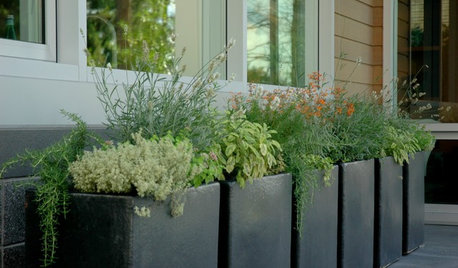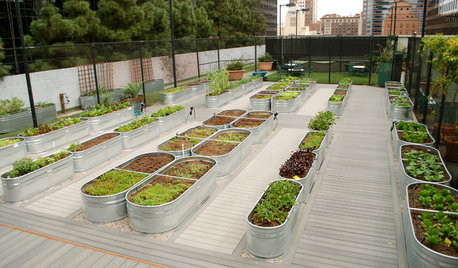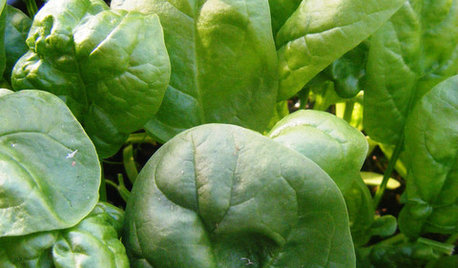Stunted Veggie Seedlings
BocaBrian
12 years ago
Related Stories

GARDENING GUIDESSeeds or Seedlings? How to Get Your Garden Started
Growing delicious herbs and vegetables starts with knowing your goals and when you want to plant
Full Story
FARM YOUR YARDHow to Build a Raised Bed for Your Veggies and Plants
Whether you’re farming your parking strip or beautifying your backyard, a planting box you make yourself can come in mighty handy
Full Story
HOUZZ TVHouzz TV: How to Make and Plant a Veggie Box
See how to start edibles from seed, then transfer the seedlings to a box on stilts to make harvesting more fun
Full Story
EDIBLE GARDENSSummer Crops: How to Grow Tomatoes
Plant tomato seedlings in spring for one of the best tastes of summer, fresh from your backyard
Full Story
FARM YOUR YARD10 Easy Edibles to Grow in Containers
These herbs, vegetables and fruits are just as happy in a pot as they are in the ground
Full Story
EDIBLE GARDENSHow to Grow Your Own Sweet Summer Crops
This guide will help any gardener get started on growing the freshest warm-season veggies and berries for summer
Full Story
GARDENING AND LANDSCAPINGUnexpected Edible Gardens
How to grow your own herbs and vegetables almost anywhere
Full Story
LANDSCAPE DESIGNRecipe for Modernist Edible Garden Style
Herbs, vegetables and fruit trees aren’t just for traditional gardens. Here’s how to design them into modernist landscapes
Full Story
COOL-SEASON CROPSCool-Season Vegetables: How to Grow Spinach
Chock-full of antioxidants and iron, spinach is a nutrient-rich addition to your fall or spring garden
Full Story
MOST POPULARHow to Start a Cool-Season Vegetable Garden
Late summer and late winter are good times to plan and plant cool-season crops like salad greens, spinach, beets, carrots and peas
Full Story







BocaBrianOriginal Author
slopfrog
Related Professionals
Arnold Landscape Architects & Landscape Designers · Manorville Landscape Architects & Landscape Designers · Winder Landscape Architects & Landscape Designers · Pottstown Landscape Contractors · Conroe Landscape Contractors · Fort Hunt Landscape Contractors · Lakewood Landscape Contractors · Melrose Landscape Contractors · New Cassel Landscape Contractors · North Canton Landscape Contractors · Shoreview Landscape Contractors · Fredericksburg Decks, Patios & Outdoor Enclosures · Crestline Decks, Patios & Outdoor Enclosures · Parlier Decks, Patios & Outdoor Enclosures · Tigard Siding & Exteriorswhgille
BocaBrianOriginal Author
carolb_w_fl_coastal_9b
BocaBrianOriginal Author
carolb_w_fl_coastal_9b
subtrop
BocaBrianOriginal Author